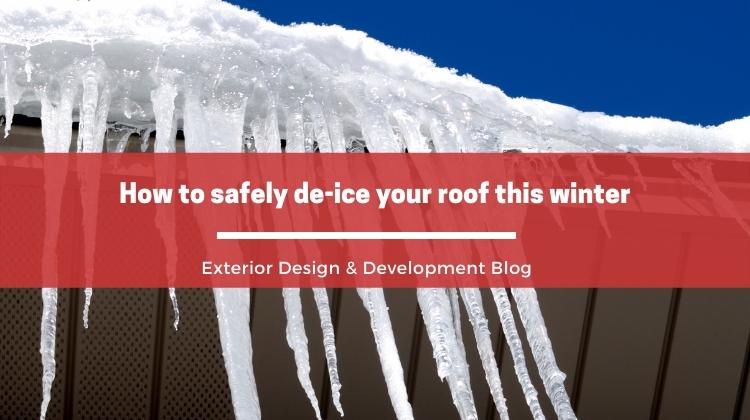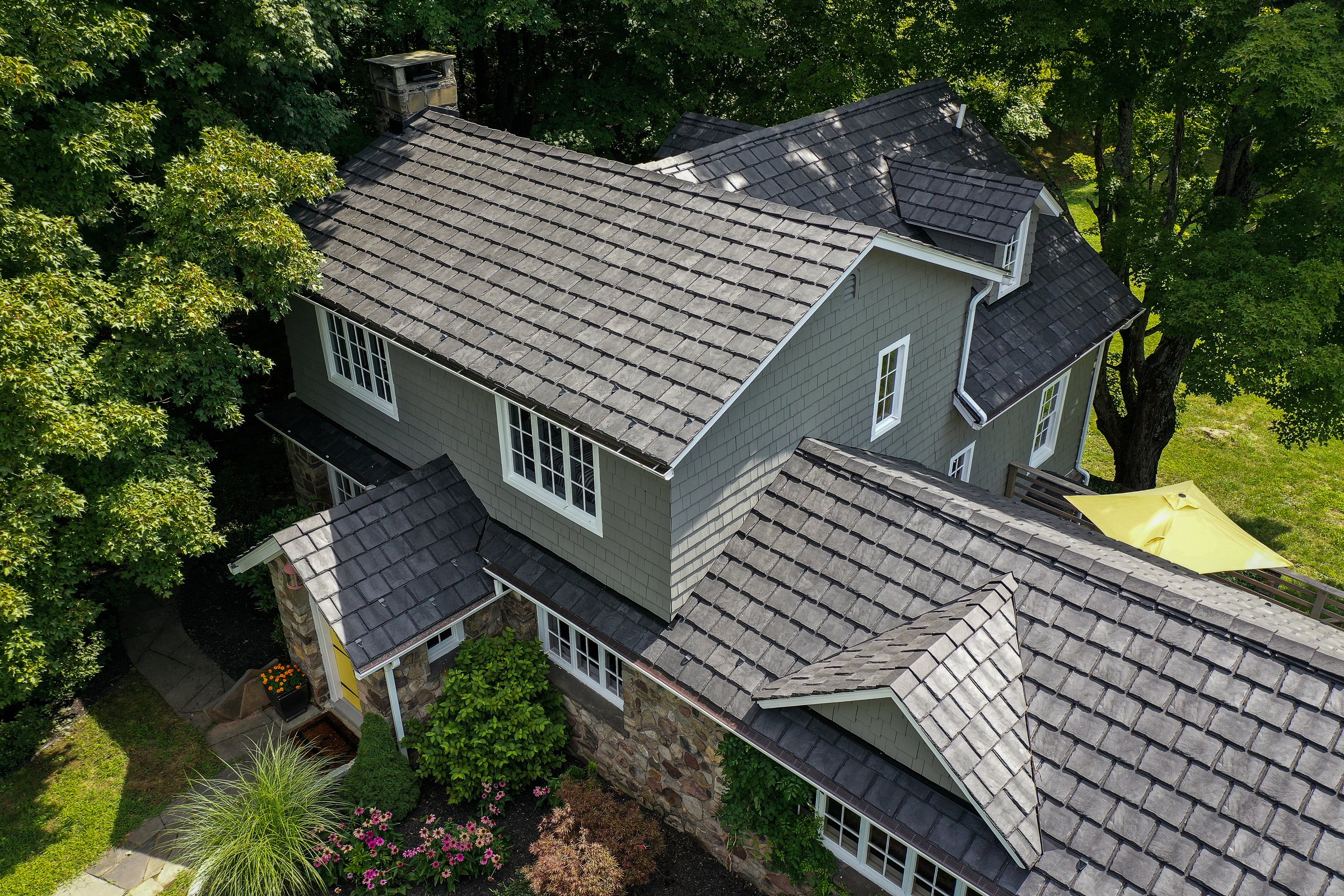Winter brings cold weather and outdoor activities involving snow that can be fun. However, your home’s roof may not respond with the same joy. Snow, sleet, and ice are also part of winter weather, and their effects on your roof are concerning. Snowmelt and ice can cause severe damage if you don’t monitor your roof before and after each snowfall. Read further to learn helpful tips to de-ice your roof.
What Causes Roof Ice Build-up?
As the sun’s rays heat the snow that collects on your roof, it heats above freezing. The sun melts the snow, and the water flows down toward the home’s gutters. As the water reaches areas of the roof that are below 32-degrees, it freezes into ice.
Another way that the snowmelt happens is when heat escapes from the home. If there is no proper insulation in the attic and attic air vents to allow for circulation, the home’s heat rises to the roof. The heat melts the snow from below, and as the water flows to freezing areas of the roof, ice dams form.
What is an Ice Dam?
As the water flows down under the snow, it reaches the gutter and roof eave. As the eave and gutter extend beyond the side of the home, they are colder than the roof. This is where water freezes and begins to form a mound of ice.
You may notice icicles hanging from the gutters, indicating that ice forms in the channel and onto the shingles.
Damage an Ice Dam Causes
If the ice dam gets big enough, it will push under and lift shingles. This lets melting water seep through the underlayment and drip into the attic insulation and the exterior walls. Over time, this can damage the eaves, walls, sheetrock, and paint.
The ice not only damages shingles, but if it breaks, it can damage anything on which it falls. The gutters can break off, damaging the side of the home or anything in its path.
In addition, long periods of moisture on the roof's underlayment can form mildew and rot.
Removing Ice from Gutters and Roofs
- We recommend hiring a roofing professional to remove large ice dams, as the specialists are experienced and can prevent further damage to the home’s structure.
- If unable to hire a professional, the first step is to use caution. You will need to access the area safely using a sturdy ladder.
- Wear safety glasses or a face shield to prevent ice chips from flying into your face and eyes.
- Use a blunt mallet to break the ice into smaller pieces, tapping lightly. NEVER use an ax, sharp tools, or power tools as you can accidentally cut the gutter, shingles, or eaves.
- It is a slow, tedious process. Even with caution, the ice can still pull shingle pieces as they are removed.
- The first step is to clear gutters and downspouts. Remember that the weight of the ladder (and you) can cause structural damage to plastic or metal in the cold.
- Purchase a calcium chloride ice melter. Never use rock salt as it will damage paint and metal and hurt any plants below when the salty water drains them.
- Create a trough-maker, a cloth tube, to lay across the ice dam. One idea is to use the leg of a pair of pantyhose or tights, fill it with calcium chloride, and tie the open end. It slowly melts the ice to allow water to flow to the downspout as it lays on the ice.
Preventing Ice Build-up
- Purchase a snow rake, use a broom or a plastic shovel to pull or push snow from the roof. The snow rake is used from the ground, while a broom or shovel will need access to the roof. Use caution, as these methods can either bury you in snow, push you off the ladder, or cause you to slip and fall from the roof. Whenever on the roof, use a safety line and have a spotter.
- If snowfall and accumulation are common in your area, you may consider replacing the roof with metal, as metal allows snow to slide off better than shingles. Although if your roof is flatter, ice dams can still form at the edges.
- A wide metal drip edge can also be installed along the bottom three feet of your shingle roof.
If replacing the roof with metal or a wide metal drip edge, install a water-repellent membrane for additional protection.
Winter can be fun. Keeping your roof and home safe from winter snow and ice damage can allow you to enjoy the season, as well.





